Traditional healing
| Traditional healing | ||||
|---|---|---|---|---|
| In the national inventory | ||||
|
Practitioners and people who know the tradition well
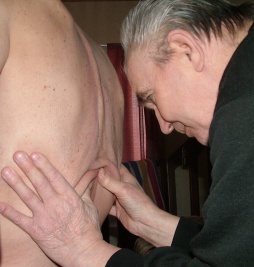
Traditional healing refers to healing practices and skills transferred from one generation to the next that are based on tradition and experience. Adapting to the four seasons has made our traditions unique treatment methods based on the principles of survival. The practices include manual and nutritional treatments developed in order to maintain the vitality of the body. These include sauna bathing, massage, bonesetting, cupping, nutrition that supports health and the use of wild vegetables, herbs and medicinal plants in particular.
When it comes to sauna bathing, the Finnish traditional healing method is widely in use, by almost 100% of Finns. Finns have built saunas in every type of residence or holiday home. Even when Finns move abroad, they attempt to build a sauna, if it is possible in any way. The Finns bathe in the sauna 1–3 times a week.
Thousands of people work as professional massagers and around 900 new professionals graduate every year. Trained massagers are registered by Valvira and some of them have become unionised through the Koulutettujen hierojien liitto. Massage training is also organised by private massage schools and academies in several cities. There are also self-taught massagers.
With regard to cupping, new cuppers are trained by the Suomen kupparit ja saunaterapeutit ry association. Their register features around 80 professionals. There are also a few dozen cuppers who have learned their profession from their predecessors. Cuppers are usually entrepreneurs or work in a treatment centre.
Just under 1,000 people work in the field of bonesetting, a traditional joint manipulation therapy, and about 500 of them are kalevalainen jäsenkorjaaja, a qualification protected by the EU. About 80 new practitioners graduate every year. In addition to this, there are around 100 jointsetters, who focus only on joint areas, such as bonesetting in Kaustinen at Kansanlääkintäkeskus and at Kaustisen Jäsenkorjaus Oy, which also treats muscles and tendons. About 100 people work as bonesetters, giving massage and joint therapy. They are trained by the associations Perinteinen jäsenkorjaus ry and Suomalainen kansanparannusseura ry. In addition to these, there are also smaller operators providing bonesetting training.
Finland has an established group of people who utilise wild vegetables and herbs, and professionals in this field are trained in a few different cities. Frantsila is the oldest of these. About 10% of Finns use wild vegetables and/or traditional foodstuffs. The Arctic Flavours Association is a national association of natural product business, which promotes the recovery, processing and use of natural produce and improves its quality. Natural product advisors are trained at several different vocational institutes, in the fields of nature and environmental studies. Mushroom, herb and berry instructors have the right to organise training for pickers and other natural product courses, for example about wild greens, herbs and mushrooms.
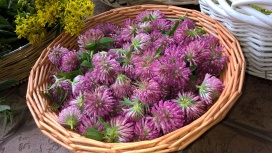
Practising of the tradition
The folk medicine tradition in Finland is exceptionally rich. It has remained strong despite the network of well-equipped health stations and hospitals covering the entire country, maintained with public funds. The traditional Finnish health culture also has many advantages on a global scale. A holistic approach is popular in the field of healing. Not many operators offer traditional healing services that are based on unhurriedness and manual skills. Sauna culture and pure Nordic nature based on wild plants supports these methods.
Sauna bathing is a traditional remedy that is practised by nearly all Finns. The significance of sauna bathing in cold conditions as a place of cleansing and relaxing the muscles and the mind has been understood throughout the ages. However, there are different forms of sauna available today, such as smoke sauna, wood-burning sauna, electric sauna and infrared sauna.
There are various forms of massage available, as well, such as sports massage, connective tissue massage, nerve route massage, soft tissue massage and lymphatic massage. A massage can be a full-body massage or partial massage, such as foot, back, neck, shoulder, head or facial massage.
Wet cupping, i.e. bloodletting, is also performed in a sauna, on tissues softened by the heat of the sauna and, often, a previous massage. Cupping helps remove so-called bad blood, which is stagnant blood and acidic tissue fluids that have clotted in the microvasculature due to increased tissue pressure. Elsewhere, dry cupping is applied without sauna bathing. Leech treatment and treating difficult wounds with maggots are now hospital treatments, after nearly hundred years.
Bonesetting as treatment was created in order to repair dislocated joints. This was complemented with introducing the setting of tendons and muscles which allowed for moving of the injured area after nerve compression was alleviated. The different subsections of bonesetting have been treatments focused on joint manipulation and treatments focused on soft tissue manipulation, joint setting and balancing of support structures.
Traditional phytotherapy, i.e. medicinal use of herbs, stems from the early stages of the human food chain, when people mostly ate leaves, berries, fruit, nuts, seeds and roots. About 30 different Finnish plant species are used more widely. Additionally, there are 80 plants used more rarely. Using wild greens in salads has provided, and still provides, good microbes for the intestines, a source of trace minerals and vitamins that support vital functions, and fibre, which supports bowel function.
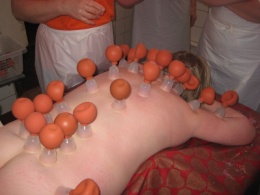
The background and history of the tradition
Up until the late 19th century, public healthcare was mainly in the hands of healers. Folk medicine was not an alternative medicine at the time, as it is now. The common folk sought treatment from their own healers and used remedies as instructed or made their own medicine. The interactions between people facilitated the sharing of conceptual knowledge. Conceptual poem metre had, in fact, major role in passing on this tradition. In addition to healers, barbers, field medics and priests also offered medical services during the medieval times and even later. In medieval monasteries, the monks treated the sick and cultivated medicinal herbs. Up until the 20th century, very few doctors were trained, which meant that healers played a vital role in curing sicknesses. In traditional cultures, the healer may also have been a spiritual leader. Priests, monks, nuns and other church figures in Finland were commonly involved in healing practises. Monks and some orders of knights also operated hospitals.
The first mention of a sauna can be found in the writings of the Greek historian Herodotos about 3,000 years ago. According to this, eastern and northern European peoples knew of sauna. Throughout the times, sauna has been seen as a healing place that promotes health. It can be considered the heart of traditional healing. Pfaler highlighted the importance of sauna bathing in Finnish folk medicine by stating that ‘in their healing procedures, our ancestors were great balneotherapists and hydrotherapists. Their best sickroom and operation room was the sauna, their carbolic steam was the sauna steam.’ (Pfaler 1888, 115.) Women gave birth in sauna and it was also used for washing the dead. Through the ages sauna was considered holy.
The oldest known traces of cupping were found in the ancient region of Mesopotamia (in modern-day Iraq, Syria and Turkey), from the era of 3,300 BC. The father of western medicine, Hippocrates, relied on the effectiveness of cupping in the 4th century. In Finland, cupping has been a familiar practice since the 15th century and the earliest written records date back to the mid-16th century. From medieval times up until the early 20th century, cupping was part of the official healthcare of the time. The earliest records of massage are from China, dating back to 2700 BC. Hippocrates (460–380 BC) was familiar enough with massage to be able to name some illnesses that could be alleviated through massage. In the Middle Ages, massage was only performed by healers, although the medicine of the time usually classified them as quacks. Massage is one of the earliest traditional Finnish healing methods originally performed in a sauna.
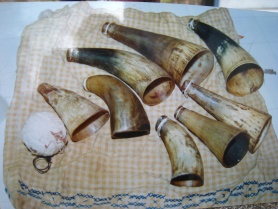
Massagers travelled from house to house, setting up shop in one house like cuppers before them. As the massage skills of cuppers were passed on from mothers to daughters, the massage skills were passed on from fathers to sons. The first massager training centre began operations in autumn 1893. In the early 20th century, massages were an important part of the spa culture which gave birth to the tradition of receiving massages in public saunas.
The oldest descriptions of bonesetting can be found in a book written by Herodotos 2,500 years ago. The first scientific records of bonesetting are presented in a thesis by G. Maxenius in 1733.
Folk medicine was the only medical treatment available in Finland until the 13th century. Our information about folk medicine and its practices, however, is based on much more recent knowledge. Elias Lönnrot was the first to collect information about Finnish healing methods and traditional medicinal plants in the 19th century. He gathered information about plants and published it under the title Flora Fennica (Suomen Kasvisto, Finnish flora) in 1860. In 1937, Sulo Cantell criticised people’s poor awareness of the natural medicinal plants of Finland and collected information from people. A professor of agriculture and forestry, Toivo Rautavaara, collected information in 1942−1943. By the 1940s and 1950s, Rautavaara was taking part in experiments involving cultivating medicinal plants. With the books and radio presentations published in the 1970s and 1980s, he kick-started a new era of interest in the use of medicinal plants. Humans’ quest to find food can be divided into five developmental stages: vegetarian, gatherer, hunter, farmer and cattle breeder, and the era of industrial food production.
The transmission of the tradition
In teaching, the skilled traditional healers no longer pass on their skills to their apprentices, as this has been replaced by organised, standardised educational courses since the 1980s. The continuance of sauna bathing culture is supported by the publicity of new scientific evidence. Primarily, sauna culture is passed on from one generation to the next. The Finnish Sauna Society, established in 1937, works to promote the sauna bathing tradition.
Training for cupping and some public lectures on the topic are available. For cupping, massage and bonesetting, passing on the traditional skills to new professionals has become more organised. Before, cuppers were women who passed on their skills to their daughters. Both men and women have worked as massagers and bonesetters, forwarding their knowledge to further generations.
Massagers are trained in vocational institutes, adult education units and community colleges all over Finland as well as at the Sports Massage Institute of Finland and a few private schools. Koulutettujen hierojien liitto ry, the association for trained massage therapists, promotes the rights of trained massage professionals.
Bonesetting is taught in accordance with an organised curriculum, which allows for cohesive information to be passed on. Scientific impact studies have been carried out on bonesetting, and public lectures have been held and several articles written. With regard to food, the societal development has strongly steered food production in an even more industrial direction. Efficiency and price have often determined the quality of both ingredients and production in recent decades. However, consumers are, to an ever growing extent, starting to value the health, taste and quality aspects of food production, which can be promoted through organic cultivation and local production. Some high-end restaurants have started to increase their use of wild greens, fish and game in their dishes, teaching people to value healthy, tasty and high-quality organic food.
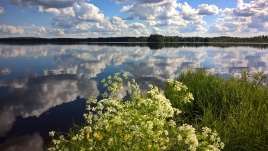
The future of the tradition
The future of traditional healing methods seems very bright. Knowledge related to traditional healing is needed to maintain health and treat illnesses. Many bodies have stated that healers have plenty of knowledge required for healthcare. In his time, District Doctor Elias Lönnrot collected information from the common people and adapted it to the conceptual format of the time. Kansanlääkintäseura ry has also recorded some information and the medical experiences and perspective of the over 30,000 cases of Master Healer Olavi Mäkelä. The association has partaken in successful cooperation with Professor Emeritus Osmo Hänninen from the University of Kuopio, who has placed great value in national healing traditions and researched traditional healing actively during his long career.
There is scientific proof of Finnish sauna bathing serving as a mitigating factor for cardiovascular mortality, and this research has garnered international attention. Top American and Chinese athletes have started undergoing dry cupping. In his time, Veikko Hakulinen, the successful Finnish cross country skier, used dry cupping and even today many athletes, such as the famous American swimmer Michael Phelps, utilise it to some extent. There is some positive evidence about the effectiveness of kalevelainen jäsenkorjaus, the traditional Finnish bonesetting method, in the treatment of people with diseases of the musculoskeletal system, indicating that some aspects of this method could, in some situations, be more effective than the methods of Current Care Guidelines. Evidence of the significance of the treatments has been received from patients of all ages.
The significance of wild greens, herbs and traditional food will be highlighted, for example due to the intestine issues and other health problems caused by modern food. The health and nutritional and medicinal values of wild plants, especially those grown in northern conditions, are a much researched subject of interest today. The berries with the best nutritional value and protective agents are bilberries, cloudberries and common sea buckthorn. With regard to wild plants, nettles and dandelions are unsurpassable. The medicinal effect of resin has already been proven scientifically. Birch sap, chaga mushrooms and honey and pollen gathered by bees are also being researched. Organic farming of herbs and plants with health benefits for private use is also gaining popularity. The extensive world of fungi has not been researched very comprehensively, even though penicillin was found there. The wild plant and mushroom courses held by trained natural product guides are popular throughout the country. Bringing the significance of traditional healing into the conceptual form of modern times creates a need for them and even promotes international respect and interest.
The communities behind this submission
Kalevalainen kansanparannus-säätiö Kansanlääkintäseura ry
Bibliography and links to external sources of information
Videos
"Jäsenet kuntoon! Apua kalevalaisesta jäsenkorjauksesta sekä nivelet ja selkä kuntoon pysyvästi.” Toimittajana Lasse Mansikka-aho. AlfaTV ja Järviradio 4.12.2017.
YLE Elävä arkisto: Kuppari päästää pahat veret pois. Kansanparantaja Anni Hynninen esittelee kuppausta (1974).
YLE Elävä arkisto: "Kun kerran kipunsa tiäsi, niin mitäs sitä lääkäriin mentiin" – kansanparannuksen historiaa. Sis. videoita, radio-ohjelmia, kuvia.
Links and online publications
Kalevalainen kansaparannus -säätiö
Koulutettujen Hierojien Liitto
Suomen Kansan Vanhat Runot -tietokanta
Suomen kupparit ja saunaterapeutit ry
Arno Forsiuksen (LKT) -kotisivut: Lääketiedettä, kulttuuria ihmisiä. Sis. paljon kirjoituksia lääketieteen historiasta.
Henriette’s Herbal Homepage. Tietoja ja blogitekstejä yrteistä.
Piela, Ulla 2010: Kansanparannuksen kerrotut merkitykset Pohjois-Karjalassa 1800- ja 1900 –luvuilla. Joensuu: Itä-Suomen yliopisto humanistinen tiedekunta No 8. Linkki julkaisuun.
Rinne, Pirjo 2000: Folklig läkekonst i Karelen – en försvinnande tradition. Nordista hälsovårdshögskolan, Göteborg Examen arbete i Fokhälsovetenskap. Linkki julkaisuun
Strandberg Hindrik 2012: Koppning i Finland fram till mitten av 1990 -talet. Helsinki: Helsingfors universitet. Linkki julkaisuun.
WHO traditional medicine strategy: 2014–2023.
Bibliography
Arkko P. 1986: Syövän kansanlääkinnän menetelmät Pohjois-Suomessa. - Acta Univ. Ouluensis, Ser. D, Med. No 138, Med. Publ. 5: 182 – xx.
Hemmilä H.M, Keinänen-Kiukaanniemi S.M, Levoska S, Puska P. 2002: Long-term effectiveness of bone-setting, light exercise therapy, and physiotherapy for prolonged back pain: a randomized controlled trial.- J Manipulative Physiol Ther 25: 99-104.
Hernesniemi, A. 1995: Jäsenet paikalleen, paha veri pois. Kansanlääkintä terveydenhoidon kentässä. -Toinen uudist. ja laaj. painos. Yliopistopaino.
Hernesniemi A. 1998: Finnish folk healing. In: Täydentävät vaihtoehdot terveydenhoidossa. - Ed. Sanna Saarinen, Oy Edita, Helsinki (Suomalainen kansanparannus).
Honko L.1960: Varhaiskantaiset taudinselitykset ja parantamisnäytelmä. - Jumin Keko. Tutkielmia kansanrunoustieteen alalta. Tietolipas No 17 (toim. J. Hautala, Helsinki)
Hänninen O, Zaproudina N. 2005: Jäsenkorjaus: elinvoimaista ikivanhaa perinnettä. - Nikama-aikakausilehti, 16 (4): 11-13.
Hänninen O, Räsänen V, Zaproudina N, Leinonen V. 2004: Traditional healing of locomotor pains in the light of literature and observations today. - Annales Societatis Historiae Medicinae Fennicae, 21: 13-26.
Kiljunen P, Riikonen P. 2004: Vaikka huuhaa sinnittelee, tiede jyrää. - Tiede 7. Lönnrot E :1963 Kalevala. - WSOY, p.647.
Kopponen Tapio (toim.) 1976: Parantajat - kertomuksia kansanlääkäreistä. Folklore. Suomalaisen Kirjallisuuden Seura. Forssa.
Laaksonen Pekka, Piela Ulla (toim.) 1983: Kansa parantaa. Kalevalaseuran vuosikirja 63. Suomalaisen Kirjallisuuden Seura, Helsinki.
Maxenius G. 1985: De effectibus fascino-naturalibus or influence of incantation. 1733, - reprinted in the University of Kuopio, Finland, p. 21 (De effectibus fascino-naturalibus - eli runoloitsujen vaikutusta).
Meriläinen P. 1986: Väestön terveydenhoidon kokonaisuus: itsehoito, virallisten ja epävirallisten terveyspalvelujen käyttö sekä niitä määräävät tekijät. - Kuopion yliopiston julkaisuja, yhteiskuntatieteet, alkuperäistutkimukset pp.64, 281.
Piippo, Sinikka 2016: Villivihannekset. Terveyttä pihoilta, niityiltä ja metsistä. Minerva Kustannus Oy.
Rautavaara, Toivo 1980: Miten luonto parantaa. Toinen painos. Helsinki: WSOY
Räsänen V, Leinonen V, Zaproudina N. 2005: Indigenous healers' explanations of low back pain and its relief. - Pathophysiology 12(4): 313-6.
Salmenperä, L. 2005: Complementary and Alternative Medicine; Attitudes of Cancer Patients, Nurses and Physicians, the Use of Complementary and Alternative Medicine by Cancer Patients (Täydentävä ja vaihtoehtoinen lääkintä syöpäsairaanhoidossa). - Turun yliopiston julkaisuja.
Vaskilampi T, Pylkkänen K. 1991: Luonnollinen ja yliluonnollinen vaihtoehtolääkinnässä. - Duodecim 107:1060-1068
Vaskilampi T. 1992: Vaihtoehtoinen terveydenhuolto hyvinvointivaltion terveysmarkkinoilla. -Väitöskirja. Jyväskylä Studies in Education, Psychology and Social Research No 88, ss 94
Vaskilampi T, Vartiainen E, Meriläinen P, Koskela K, Viinamäki H, Mäntyranta 1982: Vaihtoehtolääkinnän tuntemuksen ja käytön muutoksia - tuloksia kymmenvuotisseurannasta. Vaihtoehtolääkintä Suomessa 1982-92, - Sosiaali- ja terveysministeriön selvityksiä 3: 64-78.
Vaskilampi T and Hänninen O. 1982: Cupping as an indigenous treatment of pain syndromes in the Finnish cultural and social context. - Soc Sci Med 16:1893-1901.
Vertanen P, Hänninen O, Piippo S, Tuohimaa P, Piilo R 2017: Perinnehoitojen verhottu tieto. Kokkola: Kalevalainen kansanparannus-säätiö.
